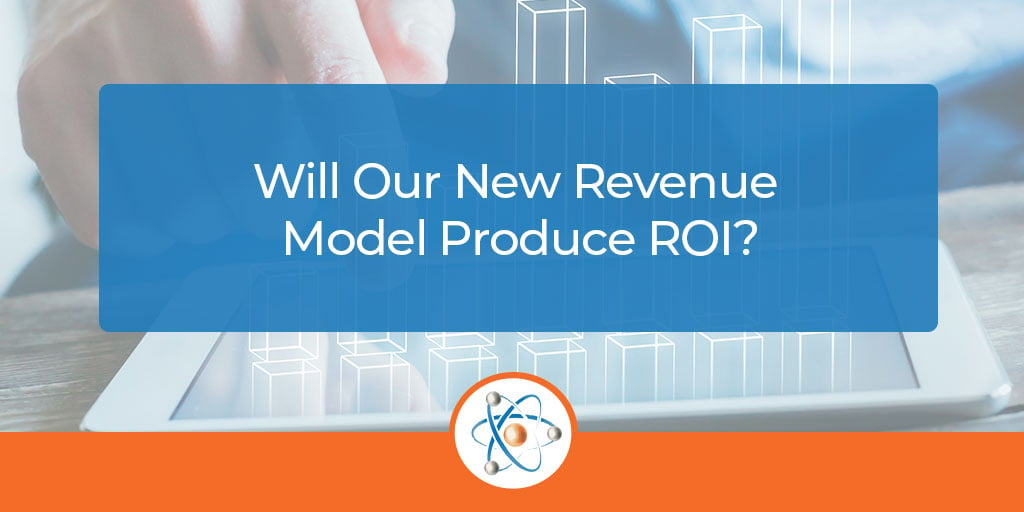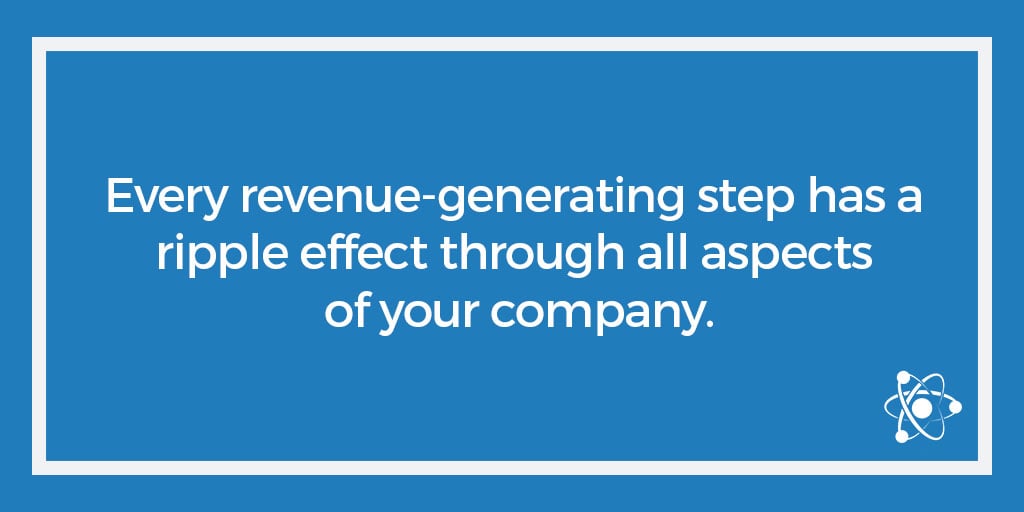
Are you one of the B2B or B2C organizations adjusting lead generation and selling tactics to increase revenue and set the stage for continued growth in this new business environment? If so, how do you validate your new or adjusted revenue model and determine if it will produce a return on investment (ROI) for the required resource allocation?
To learn the most efficient way to implement a new-and-improved revenue strategy and determine if it will produce the ROI you’re hoping for, keep reading.
Review Every Step in Revenue Operations & Business Operations Process
Amid the COVID economy, many companies are trying new revenue models based on gut instinct or a hurry-up-and-sell-however-you-can sales approach. This may work in the short term, but it will not yield revenue results going forward. To generate profitability you can count on, your revenue methodology needs to involve every area of your business and account for operational impacts.
To increase revenue, you don’t just hire more salespeople. Instead, you need to look at every step in the lead generation, sales conversion, and customer advocacy process then adjust that process as-needed based on collected data. Removing traditional silos and encouraging collaboration between departments is necessary for success since every revenue-generating step has a ripple effect through all aspects of your company.

For example, if your new revenue plan includes targeting a buying audience with more decision-makers, one that requires more solutions-based selling versus an established product-differentiation selling approach, this increases your requirements for effective sales validation and sales enablement. Now your complete revenue operations structure, including marketing operations, digital operations, sales operations, and customer operations will determine what changes need to be made to support your new revenue production goals while retaining the original buying audience. Will you need to add staff to support revenue growth or do you have excess capacity in each of the required areas?
Once you determine your new revenue model, be aware that it will impact more than the just the revenue operations element of your company. It is also imperative to assess every area of business operations including finance, production, human resources, and IT in addition to revenue operations because each plays a role in revenue generation. Will you need to modify any finance or production processes? Will the incentive structure for the revenue operations team need to be refined to incent growth in both the new and existing approaches? Do you need new legal contracts, pricing strategy, or logistics to support the new revenue method?
These are the next steps in validating if your updated revenue methodology will produce an ROI. Otherwise, it can be costly to implement without any guarantee that it will yield revenue results.
Revenue optimization requires a well-coordinated strategy that aligns over 200 tactics from every corner of your company to positively affect marketing, sales, and customer initiatives. Failure at any one of the 200+ points will slow your progress.
6 Make-or-Break Validations Before You Start a New Revenue Strategy
To determine if the ROI and profitability of sales will be worth the cost to pursue your new revenue strategy, and before you hire a marketing agency or a new sales manager, you should complete a thorough analysis of the potential costs and opportunity.
Start by satisfying these six steps and answering the questions with accurate data.
- What is my current cost of sales as a percent of total revenue? Look at marketing, sales, labor, commissions, advertising, agencies, technology, etc., – all company costs associated with generating revenue via current methods.
- What would it cost to pursue a new revenue opportunity? This would be a solid estimate inclusive of all the same factors as cited above but exclusive to the new revenue method.
- How much revenue would the new method need to generate to achieve the same cost-of-sales as a percent of revenue exclusively associated with the new pursuit? What is the total downside risk if we don’t meet the goals versus the upside potential if we exceed them?
- Analyze market opportunities to determine revenue potential and revenue timeline by industry segment for new revenue production method.
- Assess attrition expectations for the current revenue production if adding a new method moves some purchases/transactions to a different revenue channel (net neutral). Other impacts to existing revenue methods will amplify and detract from revenue results, so be sure to evaluate for net gain ROI.
- Determine which combination of market segments, if any, meet cost-of-sales as a percentage of revenue threshold in currently addressable markets to yield an acceptable ROI and determine a solid timeline how long it will take to achieve that ROI.
Now that you have analyzed the potential of your new revenue model, caring for all the resource requirements for both revenue operations and business operations, the final “must-have” before launching into a new revenue opportunity is the KPI infrastructure to measure progress, refine process, and make decisions as you go. This KPI data helps you set goals, manage performance, and predict EBITDA impacts of a new revenue method using a continuous improvement and refinement approach.
When your people, process, and data are aligned, you can enjoy successful end-to-end revenue production™ with profitable results.
Measurements of Total Costs to Outcomes
Do you have KPI data that measures total costs to outcomes for each stage of the buyer journey for each customer segment and lead source for your current revenue strategy?
This data allows for the integration of a new revenue methodology with an ROI calculation that addresses the impact on existing revenue capabilities, performance in comparison to current benchmarks, and ROI accuracy with the profitability of new revenue methodology calculated against that of existing revenue methodology based on cost-of-sales as a percent of revenue benchmarks.
Because you cannot manage what you cannot measure, KPIs and data dashboards are essential to understanding whether the ROI on your new revenue strategy will be worth the costs. Once you have quantified the information, you can implement your plan or reassess and adjust it until you feel confident it will produce the desired ROI outcomes, or at the very least, you can cut your losses before you spend more money than you are willing to risk.

Solutions to a New Revenue Operations Strategy & ROI
As a result of COVID-19, a “new normal” has been imposed upon us, requiring a widespread shift in how we do business. For some, this includes completely new revenue-generating activities. For others, the shifting paradigm to nearly all digital engagement is familiar but has never been the sole method of revenue production.
Some companies are all eCommerce and need to add strategic accounts while others have only ever relied on in-person sales and need to incorporate digital selling. Other companies are launching new products or services as a result of the pandemic and want to expedite revenue production in new markets to offset losses in others. These are unprecedented times where cash and ROI are critical for your future; invest successfully to grow your company through the “next normal.”

If you’re not sure how to create or measure a new revenue operations strategy, Atomic Revenue offers solutions to identify, prioritize, measure, and manage end-to-end revenue production. Our Revenue Operations Specialists analyze and optimize revenue operations strategies and align outcomes through all areas of your company, empowering your people through process and data. Contact us today for a no-obligation, complimentary Revenue Operations Assessment, and let’s work together to launch your revenue growth or launch your new revenue method.
About the Author
Brian Peterson, formerly COO, is an owner of Atomic Revenue and a Finance and Operations Consultant in the areas of business ops functions, supporting client engagements, strategy reviews, profitability analysis, and KPI programs.





